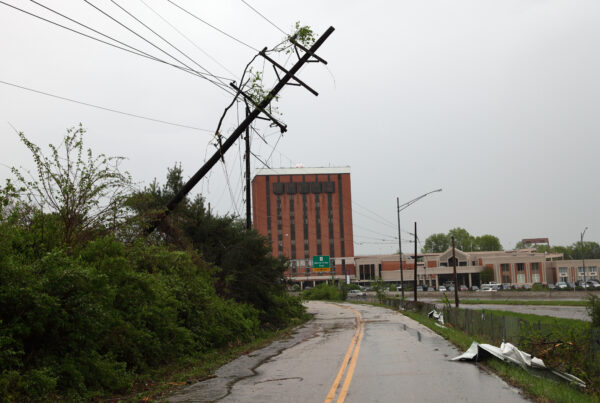BACKGROUND INFORMATION
U.S. Environmental Protection Agency
The U.S. Environmental Protection Agency’s (EPA) established the Significant New Alternatives Policy (SNAP) program in order to identify and evaluate substitutes for ozone-depleting substances.
The goal is to reduce overall risk to human health and the environment. SNAP does extensive testing and after thorough evaluations, they generate lists of acceptable and unacceptable substitutes for each of the major industrial use sectors.
In order to see where we are headed, it is good to look back and see why. President Nixon was elected into office in 1968. He quickly established an advisory group to focus on the pollution problems that were plaguing the nation.
Dirty water was only one ingredient. At the close of the 1960s, the United States could not escape the fact of, as TIME put it in 1968, “the relentless degradations of a once virgin continent.” The evidence was right in front of citizens’ faces. Pollution had gotten bad enough to be undeniable, and science had become advanced enough to make the reasons why clear. In 1963, smog had killed 400 New Yorkers, and Lake Erie’s oxygen content had become so depleted that the center of the lake sustained precious little life. An oil spill off the California coast in 1969 coated 400 square miles with slime and killed hundreds of birds. Scientists announced that auto exhaust was at high enough levels in some places that it could cause birth defects. The city of St. Louis smelled, as one resident put it, “like an old-fashioned drugstore on fire.”1
President Nixon agreed with the advisory board’s recommendations to merge many environmental responsibilities of the federal government into one new agency, the EPA2.
- The EPA would have the capacity to do research on important pollutants and on the impact of these pollutants on the total environment.
- Both by itself and together with other agencies, the EPA would monitor the condition of the environment–biological as well as physical.
- With these data, the EPA would be able to establish quantitative “environmental baselines”–critical for efforts to measure adequately the success or failure of pollution abatement efforts.
- The EPA would be able–in concert with the states–to set and enforce standards for air and water quality and for individual pollutants.
- Industries seeking to minimize the adverse impact of their activities on the environment would be assured of consistent standards covering the full range of their waste disposal problems.
- As states developed and expanded their own pollution control programs, they would be able to look to one agency to support their efforts with financial and technical assistance and training.
In July 2015 the EPA passed Rule 20. Through their research they discovered various hydrofluorocarbons* (HFCs) and HFC-containing blends that were previously listed as acceptable were now listed as unacceptable because better alternatives were now available. As stated by the EPA:
* a group of industrial chemicals primarily used for cooling and refrigeration
Under section 612 of the Clean Air Act (CAA), EPA reviews substitutes within a comparative risk framework. More specifically, section 612 provides that EPA must prohibit the use of a substitute where EPA has determined that there are other available substitutes or potentially available substitutes that pose less overall risk to human health and the environment.
The substances in question were of various end-uses in the aerosols, foam blowing, and refrigeration and air-conditioning sectors. This affected chemical producers and some manufacturers of equipment and products using aerosol propellants, refrigerants, and foam blowing agents in the industries of:
- supermarket systems
- remote condensing units
- stand-alone retail food refrigeration equipment
During the past two decades the science behind climate change and what affects it has become better understood. The end goal for the EPA, as well as responsible manufacturer’s, is to reduce greenhouse gas emissions (GHGs). HFCs have been proven to be potent GHGs and “although they represent a small fraction of the current total volume of GHG emissions, their warming impact is very strong. HFC emissions are projected to increase substantially and at an increasing rate over the next several decades if left unregulated.” The U.S. is projected to emit 31% of all GHGs caused by HFCs by 2030, the highest of any other country. Help protect our environment by phasing out HFCs in polyurethane foam blowing applications!
The EPA see’s the urgency in phasing out HFCs and took action with Rule 20. Unfortunately, it affected manufacturer’s and suppliers who petitioned the ruling. The SNAP 20 rule was declared invalid in August 2017 by the D.C. Circuit Court of Appeals. In the fall of 2017 Honeywell, Chemours and NRDC asked the Court to reconsider the ruling and the Court denied the request.
In June 2018 they then petitioned the Supreme Court to review the decision and we are currently awaiting the Supreme Court’s response to that request. Interestingly, the EPA told the Supreme Court it thought the D.C. Court’s ruling was correct and that there was no reason for the Supreme Court to review the matter. EPA also pointed out that it was already in the process of considering how to change the SNAP 20 and 21 regulations. At this time, the EPA has stated that it will not be enforcing SNAP 20.
Regarding SNAP Rule 21, the short legal test set out by the D.C. Court is this:
If EPA (through SNAP) required a sector and/or end-use to cease using ODS, EPA does not have the authority to order that sector to go further and require the use of lower GWP blowing agents (e.g., low-GWP HFCs, HFOs).
Ozone Depleting Substances (ODS) include:
- chlorofluorocarbons (CFCs)
- hydrochlorofluorocarbons (HCFCs)
- hydrobromoflurocarbons (HBFCs)
- halons
- methyl bromide
- carbon tetrachloride
- methyl chloroform
California SB 1013
Senator Ricardo Lara (D–Bell Gardens), who has championed other pieces of legislation on HFC reduction, including SB 1383, which commits the state to reduce HFC emissions by 40% by 2030 authored the “California Cooling Act” (SB 1013).
“The California Cooling Act shows that cleaner air does not need to be a choice between protecting our planet and growing our economy,” said Senator Lara. “With Washington embracing climate change denial, California is … charging ahead to reduce super pollutants and do our part to fight global warming.”3
While the EPA resolves their cases in the courts, the California legislature has passed the “California Cooling Act” (SB 1013) which will adopt SNAP 20 and 21 for products made in or shipped into California for implementation on January 1, 2019. The California Cooling Act will apply all requirements of SNAP 20 & 21, including all approved blowing agent substitutes and transition dates. It affects all foam produced, imported to, and used in CA after January 1, 2019. It will therefore require companies located outside of CA to comply for any foamed product shipped into CA.
“This landmark legislation demonstrates how states can champion tangible climate action by moving away from super-pollutant HFCs.”
– Avipsa Mahapatra, EIA
CA has stated that they are currently in discussions with other states interested in adopting their own version of SB 1013. The governors of New York and Maryland have already announced plans to do just that.
CONCLUSION
Even though SNAP 20 is no longer in effect and SNAP 21 seems not far behind, the compliance dates for the California Cooling Act are currently set for 2020 and 2021 (unless CARB extends those dates) and the EPA is in the process of a rule-making to address the Court’s decision on the Federal regulations.
It is prudent for manufacturers to consider these factors when assessing plans to transition. Certain sectors and technologies in the foam manufacturing industry use blowing agents (BAs) containing hydrofluorocarbons (HFCs), which have high-global warming potentials (GWPs). Alternative BAs with low GWPs are available and can be substituted thereby reducing the associated greenhouse gas (GHG) emissions without impacting performance.
Foam Supplies, Inc.’s Ecomate® is a low-cost low-GWP BA solution that is approved by SNAP and immediately available to industry.



